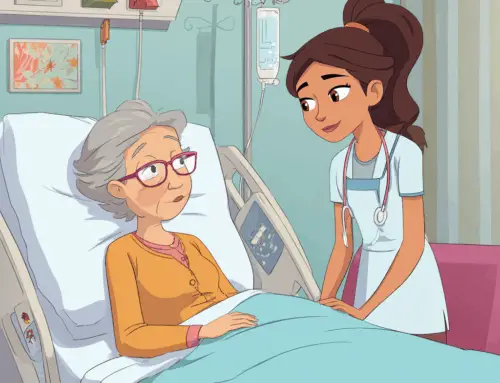As time goes by, our bodies begin to experience the signs of aging.

Some of these changes can be felt or seen, while others causes lingering aches and pains. Simple movements such as standing up from a chair or walking often become more painful or slower than in the past. One of the most important changes is the way the body begins to respond to and absorb medications.
In this article, we will discuss the importance of maintaining the proper medication regimen for seniors, which will in-turn increase their quality of life.
Senior Medication Guide Outline
The United States Food and Drug Administration (FDA) has a medication guide specifically for seniors. The guide discusses the way age changes the digestive system.

This can affect the rate the medications enter the individual’s bloodstream. When the body weight changes, this can impact the length of time the medication remains in the body and the amount of medicine the person should be taking.
The circulation system often slows down, This impacts how fast medications reach the kidneys and the liver. The kidneys and liver may also be working much more slowly, affecting the way the body removes the drug and the way the medications break down. This means medications must be adjusted, monitored and dosed properly because they remain in the body longer and can cause much more severe side effects.
Balance in elderly patients is critical due to the changes age causes in the body. This includes a greater risk of drug interactions. A prescription for drugs is written for eight out of ten older Americans for a minimum of one medication. A lot of older adults are taking three medications or more every day. The population of the United States consists of thirteen percent of older adults, yet they are using thirty percent of all the over-the-counter medications and 34 percent of prescription medicines.
Prescription Drugs for the Elderly
There are ten important facts to know regarding prescription for drugs for older Americans:
- Seniors are using more supplements, over-the-counter and prescription medications including anxiety medicines, blood pressure medications and drugs for angry depression than any other age group in the United States. Polypharmacy in the elderly has become common because numerous physicians are prescribing multiple medications for one condition. This can lead to drug related adverse events.
- The risk of drug reactions, harmful side effects and mix-ups has increased for older adults due to polypharmacy in the elderly.
- Age often causes the kidneys and liver to become less efficient. This impacts the way the medication works, is absorbed, broken down by the body and removed.
- If the doses are not properly adjusted, the medicine can remain in the body longer and trigger severe side effects.
- Changes in the body related to age including increased fatty tissues, decreased body fluid and weight loss can change the distribution of the drugs. This can lead to a concentration in the body.
- Older adults more frequently experience increased sensitivity to medications.
- Vision and hearing loss and impaired memory make it harder for older adults to remember the instructions from the medication sites. This is especially true for those with a complicated regime or short term memory time.
- Many older Americans are dealing with a decline in memory, mobility, grip strength and eyesight causing an inability to take medications as prescribed and safely.
- Older adults often get their prescriptions from different medication sites and healthcare professionals. This makes it harder to determine drug related adverse events, ineffective or unnecessary medications and harmful doses.
- Chronic conditions including cancer, high blood pressure and diabetes are more common. A complicated management regimen for medications is required.
Balance in elderly patients is necessary due to deterring from medication plans, bothersome side effects, forgetfulness, the cost or the belief the medication is not working. Not following a treatment plan or instructions for medications such as anxiety medicines or drugs for angry depression is called non-adherence. Fortunately, these challenges and risks can be prevented.
It is important to have information regarding appropriate and safe medication use and the best ways to get the most out of all medications. This is accomplished by learning about the medications taken, the health conditions, reading online sites the individual can trust, speaking with healthcare providers and joining health support groups.
The best champion and health advocate is the individual taking the medications. The key is learning how to care for themselves effectively and safely.
Keep a Medication List for Seniors
Older adults should have and maintain a list of medications including:
- The name of every medication used including herbal remedies, dietary supplements and prescription medications.
- The name of the healthcare provider prescribing every prescription medication.
- The purpose of every medication along with the symptoms the drug is meant to treat.
- The correct dosage to take and how often the medication is taken.
- If refills are required.
The list should be updated every time a medicine is stopped, a new medication is prescribed or if the strength of the dosage is changed by the healthcare professional. All of the medications should be reviewed by the primary care provider on a regular basis to ensure no unnecessary medications are being taken. The provider should be reminded of any adverse reactions to specific medicines and any allergies.
Read All Medication Labels
The older adult should always talk to their physician prior to discontinuing any medications. Every OTC package has a facts label. This label should be read in addition to any leaflets with patient information provided with the prescription medicine and all package inserts whenever beginning a new medication.
This provides important information regarding avoiding problems and receiving the best results including:
- What the medication has been prescribed for.
- The correct way to take the medication including the prescribed dosage and how often the medicine must be taken.
- The possible allergic reactions and side effects to look for.
- Warnings including when to discontinue the medication and talk to a physician, who should not use the medication and who has a higher risk of side effects.
- The instructions for proper storage
Using just one pharmacy ensures the records are all in the same place. The pharmacist will be able to monitor the medications regularly and issue a warning regarding any possible drug reactions. Medications should always be stored safely and the expiration dates checked. Medications should always be kept in the bottle, tube or box they came in. This ensures the directions and dosage are always close by.
Things to Keep in Mind When Taking Prescription Medication
Medications should be stored in an area not accessible to visiting grandchildren and pets. Prescription medications should never be taken by anyone other than who they were prescribed for or shared. If there are any issues with the medication, the individual should consult with their healthcare provider. There is no such thing as a trivial or stupid question pertaining to medications or health.

A patient navigator should be identified in the healthcare team to help with prescription medications and the complexity of the healthcare system. This is especially important if the older adult has a short term memory time or is suffering from more than one chronic condition. The navigator or primary care physician can act as the navigator for the healthcare system.
The practice or person will be responsible for making certain all treatment regimens and chronic conditions are being addressed and tracked. Medicare’s Medication Therapy Management Program enables healthcare professionals and pharmacists to fulfill the role of a patient advocate. This is an excellent option and should be given thoughtful consideration.
Taking prescription medications and drinking alcohol is a risk for every adult, especially older adults. Alcohol and medications are cleared slower by seniors, making them more sensitive to the effects. The interaction of alcohol and numerous prescription medications can cause dangerous and toxic side effects. When combined with alcohol, the medication may be harmful, not work or work differently than intended.



